
 The Sutton Skunk was a little-known tractor tank from early 1932, built for the Chinese export market by Frank ‘One-Arm’ Sutton – Englishman and adventurer. In his time, Sutton made many inventions, and this was perhaps one of his most ambitious. It was simply a Caterpillar 5-ton M1917 tractor that was borrowed from the military and armored up. Featuring two 82mm Stokes mortars and a pair of Browning machine guns, it was a fairly well-armed tankette, almost certainly designed with infantry support in mind.
The Sutton Skunk was a little-known tractor tank from early 1932, built for the Chinese export market by Frank ‘One-Arm’ Sutton – Englishman and adventurer. In his time, Sutton made many inventions, and this was perhaps one of his most ambitious. It was simply a Caterpillar 5-ton M1917 tractor that was borrowed from the military and armored up. Featuring two 82mm Stokes mortars and a pair of Browning machine guns, it was a fairly well-armed tankette, almost certainly designed with infantry support in mind. 
 The Disston Tractor Tank (sometimes known as the Disston 6-ton Tractor Tank) was essentially a Caterpillar tractor that was given a simplistic armored superstructure, a turret, and a modest armament of a .30 cal (7.62 mm) machine gun and 37 mm (1.46 in) cannon. It was a Great Depression-era business venture – The idea being to sell cheap tanks to the military, knowing full well that value for money would be a key selling point during the period. However, they were, for the most part, deemed unsatisfactory, and eventually ended up being marketed to developing nations such as Kuwait, Romania, and Afghanistan for army / policing use.
The Disston Tractor Tank (sometimes known as the Disston 6-ton Tractor Tank) was essentially a Caterpillar tractor that was given a simplistic armored superstructure, a turret, and a modest armament of a .30 cal (7.62 mm) machine gun and 37 mm (1.46 in) cannon. It was a Great Depression-era business venture – The idea being to sell cheap tanks to the military, knowing full well that value for money would be a key selling point during the period. However, they were, for the most part, deemed unsatisfactory, and eventually ended up being marketed to developing nations such as Kuwait, Romania, and Afghanistan for army / policing use.  China is reported to have received (or at least ordered) four tanks. No dates are given by sources for the order date, but according to “A Place to Live and Work: The Henry Disston Saw Works and the Tacony ” by Harry C. Silcox, four tanks were built in 1938 and delivered in 1939 because of security concerns. The source for this claim is cited in the book, but due to an issue with obtaining a print copy of Silcox’s book, the source cannot be ascertained at this moment in time. Many other book sources also suggest that China received some tanks, too.
China is reported to have received (or at least ordered) four tanks. No dates are given by sources for the order date, but according to “A Place to Live and Work: The Henry Disston Saw Works and the Tacony ” by Harry C. Silcox, four tanks were built in 1938 and delivered in 1939 because of security concerns. The source for this claim is cited in the book, but due to an issue with obtaining a print copy of Silcox’s book, the source cannot be ascertained at this moment in time. Many other book sources also suggest that China received some tanks, too.
In contradiction to Silcox’s claim of four delivered in 1939, one source suggests that the order was actually canceled in 1935, and these were sent to the USMC – although this claim can be largely dismissed, as it is believed that the USMC use is a myth.
There are no records of any negotiations or attempts to sell the Chinese the vehicles. Even if there were, it seems possible that the Chinese would not be interested in the vehicle. According to “General of Fortune, The fabulous story of One-Arm Sutton “, by Charles Drage, the similar Sutton Skunk might have been marketed to China in late 1932, but the Chinese preparations for war against Japan were in the hands of a German military mission, headed by General Von Seekt, who did not need “talented amateurs like Sutton, nor his ingenious improvised tractor tank “.
Whilst the situation was dire in the mid-late 1930s, especially as Sino-German cooperation was coming to a close by 1938, and it might logically follow that the Chinese would now be willing to buy tractor tanks, there is no credible evidence for even the marketing of Disston Tractor Tanks ever taking place. Also, given that the Sutton Skunk was rejected, when ‘One-Arm Sutton ‘ was so well respected in China, it seems unlikely that the Disston Tractor Tank was ever bought by China. If the Disston Tractor Tank was ever sold successfully to China, it is likely that a successful sale would involve Sutton, if he was not, by this time, busy with his mining operation in Korea.
The leading academic on the western armaments trade to China in the early 20th century, Anthony B. Chan was contacted, but unfortunately he has given no comment on the subject.
------------------------------------gold?
The Dogmeat General’s Tank — China’s First Domestic Tank?
August 27, 2020 Leo Guo
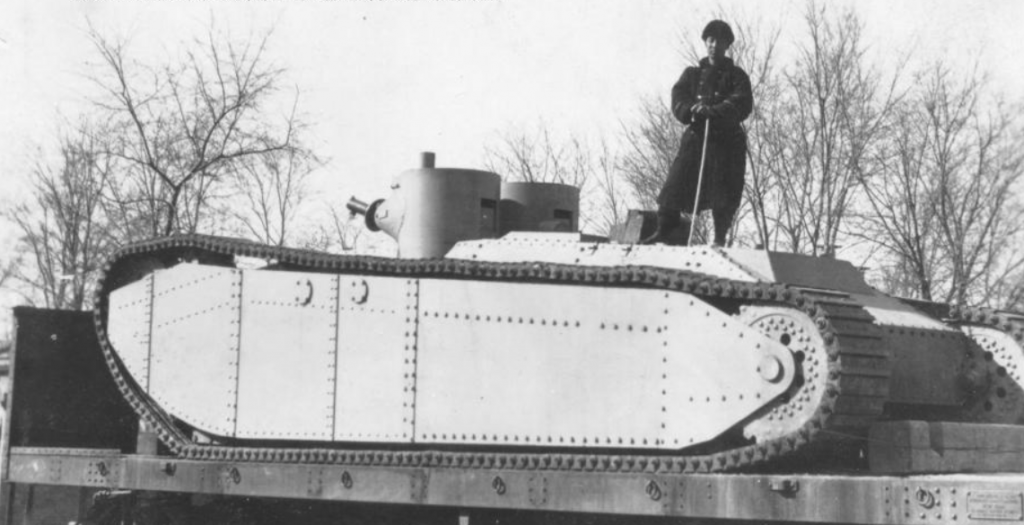
A side view of Zhang Zongchang’s tank. (張之維)
The 1920s was a turbulent time in Chinese history, with most of the country divided and suffering through numerous conflicts between a multitude of warlords competing for autonomy. Following the Northern Expedition between 1926 and 1928, the country was ostensibly unified under the Nationalist Chinese. Prior to the country’s pseudo-unification, many warlords built their militaries upon mercenary advisors and business dealings with foreign firms for weaponry. This resulted in a myriad of foreign equipment being delivered to China. For example, Zhang Zuolin’s Fengtian Clique made several purchases from French firms between 1923 and 1926 for warplanes, tanks, and small arms. Furthermore, many warlords also purchased industrial equipment to manufacture weapons for their own armies. In addition to small arms, warlords were able to construct various improvised armored vehicles based off of regular cars and trucks. These indigenous armored cars often accompanied tanks purchased from abroad in combat. In the midst of all the one-off and obscure armored creations, one particularly notable vehicle belonging to the infamous “Dogmeat General” Zhang Zongchang (张宗昌) stands out amongst the rest. Unlike the makeshift armored cars used by most warlords, Zhang’s vehicle was that of a tank. Numerous warlords had already been able to obtain various types of tanks from purchases. However, Zhang’s tank was notable in the sense that it appeared to have been constructed indigenously and was not not foreign-made. Popularly referred to as the “Studebaker tank”, only two photos of the tank are known to exist, taken by a photographer from an American military attaché group led by Captain David Barrett visiting Zhang’s army.
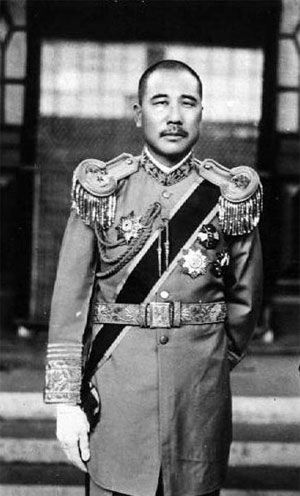
Zhang Zongchang / 张宗昌 (ChinaNews)
Despite almost a century passing since the photos were taken, little about the tank’s history or specifications are known. Numerous theories and conjectures have formulated throughout the years, but nothing definitive can be reached. A popular theory prevalent in Chinese literature suggests that this tank was constructed in China at the Jinan Xincheng Infantry Arsenal (济南新城兵工厂). The Jinan Arsenal was originally formed in February 1926 following Zhang’s decision to move the Dezhou Infantry Arsenal to Jinan, and consisted of Western manufacturing equipment. The tank was allegedly constructed under the supervision of Czechoslovakian arms specialist Ferdinand Hauschildt, who was hired by Zhang to oversee arms production. Curiously, Hauschildt was referred to as German by some sources. This can likely be attributed to his name sounding exceptionally German as well as the fact that Zhang had also hired German specialists to oversee arms production. There are also claims that this tank was designed and produced for Zhang by White Russians (or remnants of the exiled Czechoslovak Legion). This too is possible as Zhang made extensive use of White Russian mercenaries, but there too is no known conclusive evidence to support this. There are also claims that this tank was captured by Nationalist Chinese forces in 1927 and was briefly put on display in Nanjing. The tank was allegedly nicknamed “steel bull” (铁牛) by Nanjing’s citizens before it was scrapped. If this vehicle was truly built domestically, it could very well be the first indigenous tank built in China if one disregards armored cars.
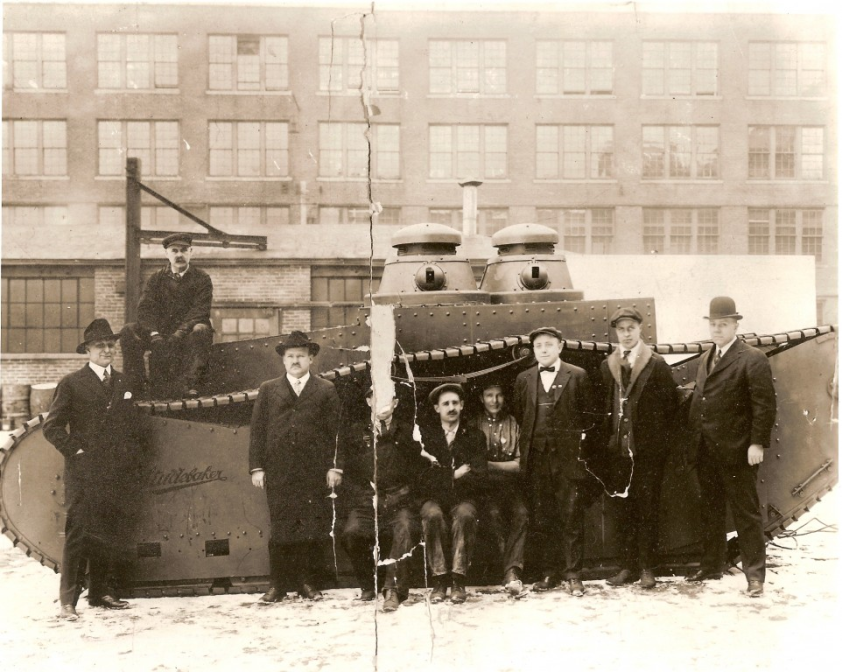
The sole Studebaker prototype in the factory grounds, showing the two machine gun turrets. (tixax.ru)
Another theory is that this tank was built and purchased from abroad, likely from the British or Americans. Reasoning behind this theory lies in the fact that the tank in question bears some resemblances to the World War I-era British / American Studebaker Tank or the British Medium Mark D. The Studebaker tank was designed in the Summer of 1918 by two British officers attached to the British Tank Mission in Washington, DC and produced by the American Studebaker Corporation located in South Bend, Indiana. The power-plant of the Studebaker tank was the British Hall Scott 4-cylinder water-cooled aircraft engine, and its running gear and tracks were based upon the British Newton tractor, also produced by Studebaker. Although designed as a competitor to the British Medium D tank, the Studebaker tank ultimately did not see service with the British due to the war’s conclusion. However, a sole prototype was able to be completed and sent to Britain for field trials albeit without the two machine gun turrets. According to historian David Fletcher, the Studebaker tank was able to achieve a maximum speed of 19.35 km/h / 12 mph and had a minimum crew of three. The British had plans to use the Studebaker tank as an unarmed tractor or a supply tank, but these plans were also forfeited upon the war’s conclusion. The fate of the Studebaker tank prototype is ultimately unknown, but most sources agree it was likely scrapped. Zhang’s tank certainly bore several design resemblances to the Studebaker tank and British Medium Mark D tank, such as the all-around continuous tracks, and similarities between the tanks’ side armor arrangement, the low profile, and in the case of the Studebaker tank, the two machine gun turret set-up (though the turret designs differed). Thus, in accordance with one theory, Zhang’s tank could have been produced by either the Americans or British and was possibly based upon the aforementioned tanks. However, no evidence is yet known to corroborate this theory that a foreign firm produced and exported this tank to Zhang.
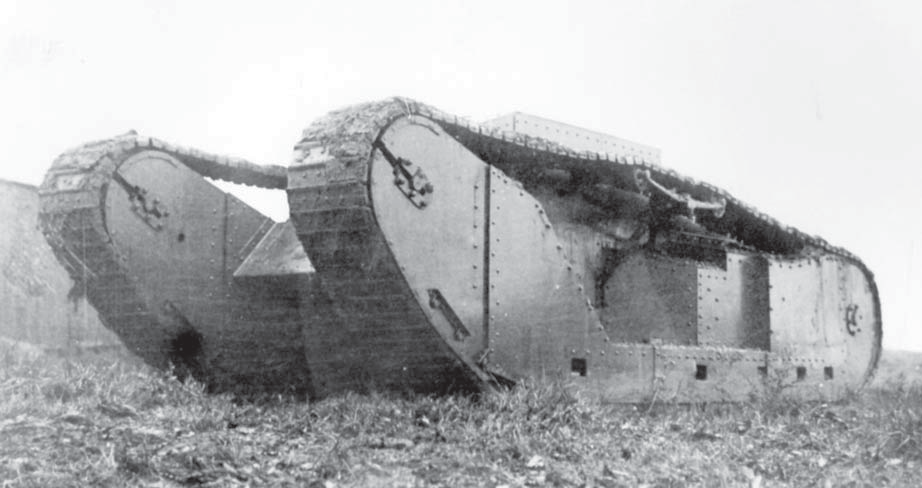
The Studebaker tank photographed in Britain whilst undergoing trials. The two machine gun turrets were removed. (David Fletcher)
From a cursory observation, the tank was armed with three Maxim machine guns. Both of the tank’s turrets housed a machine gun, while the third machine gun was housed in a ball mount in the hull. Due to what appears to be armor plating covering the sides, it is unknown what the suspension of the tank looked like. There is, however, a visible idler and sprocket wheel. Other than what can be deduced based on the photos. not much else is known about the tank such as its armor values, crew count, specific dimensions, powerplant, and performance. Curiously, there are also speculations that the tank may not have even been functional at all. Some literature suggests that the tank was built solely as a “paper tiger” to intimidate Zhang’s opponents. Whether or not this theory holds any merit, will likely remain forever unknown.
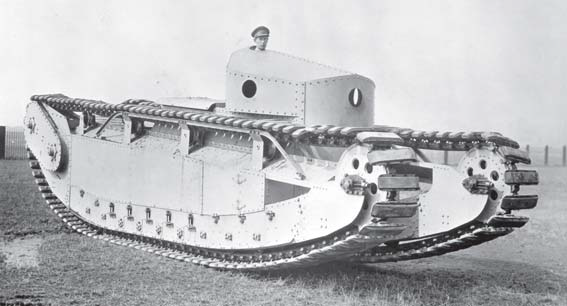
The British Medium Mark D tank, which the Studebaker tank was originally created to compete against. (David Fletcher)
In conclusion, the tank depicted in the two photos taken by the American attaché group from their visit to Zhang’s forces is perhaps one of the most mysterious yet interesting oddities to originate from China’s Warlord era. Despite almost a century passing since the photos were taken, little to no definitive information has surfaced to explain the vehicle’s true history. Up until that point, most of China’s warlords were only capable of importing foreign armored fighting vehicles, and to a lesser degree able to create makeshift armored cars. If this mysterious tank was indeed functional and not a mere “paper tiger”, it could have very well been the first tank (in the most common definition) to be manufactured in China, preceding the Type 59 medium tank (considered to be China’s first tank based on the Soviet T-54) by around thirty years. The truth about this tank however, may never be known.
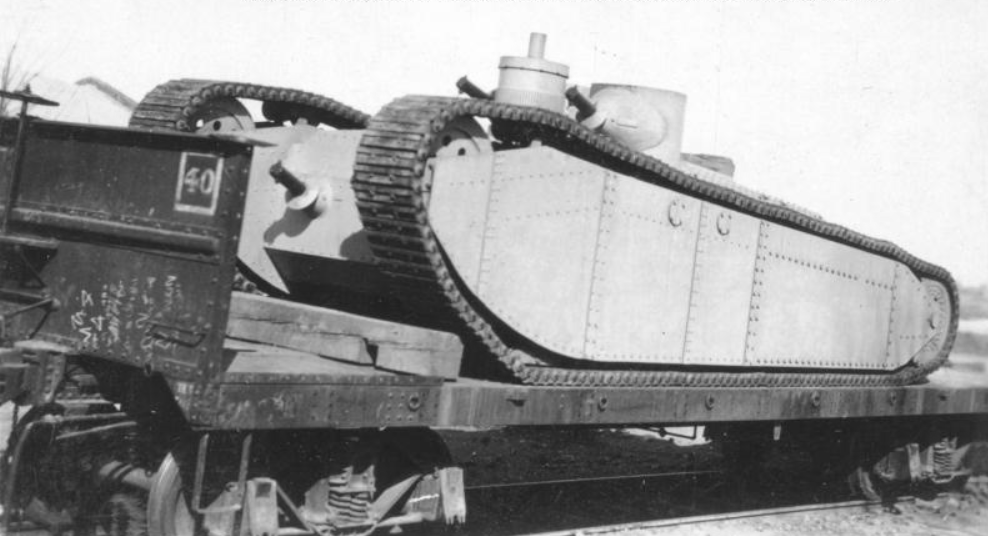
A frontal view of Zhang’s tank, showing a third machine gun located in the middle of the hull. (張之維)
----------------------------Disqualified 1949 too beautiful for the world of enlisted

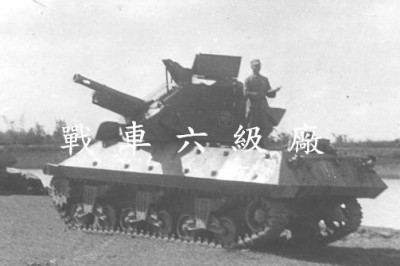




































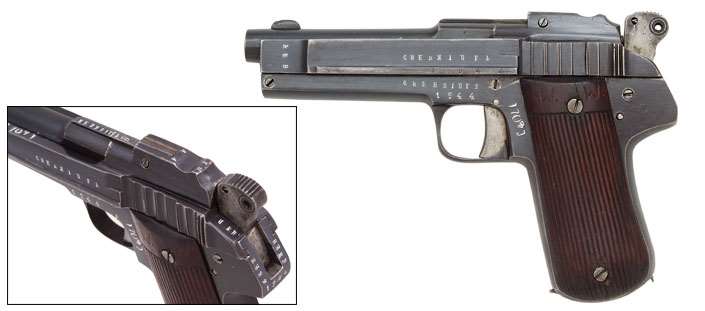
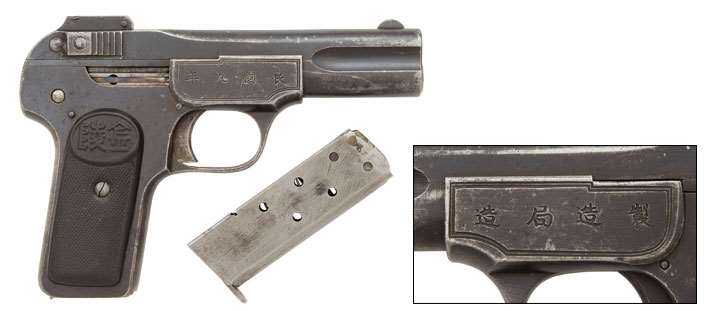
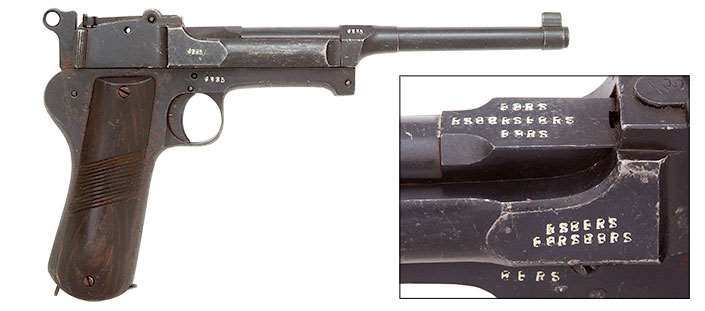
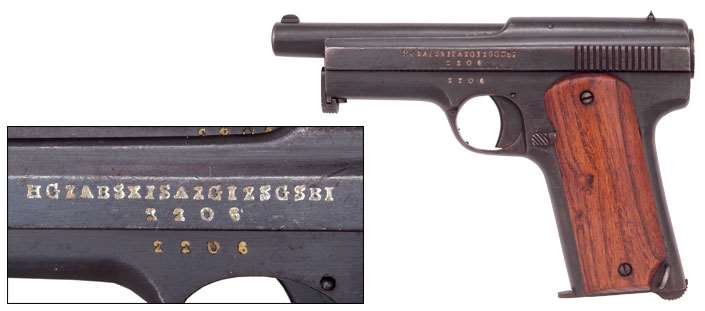














 The Sutton Skunk was a little-known tractor tank from early 1932, built for the Chinese export market by Frank ‘One-Arm’ Sutton – Englishman and adventurer. In his time, Sutton made many inventions, and this was perhaps one of his most ambitious. It was simply a Caterpillar 5-ton M1917 tractor that was borrowed from the military and armored up. Featuring two 82mm Stokes mortars and a pair of Browning machine guns, it was a fairly well-armed tankette, almost certainly designed with infantry support in mind.
The Sutton Skunk was a little-known tractor tank from early 1932, built for the Chinese export market by Frank ‘One-Arm’ Sutton – Englishman and adventurer. In his time, Sutton made many inventions, and this was perhaps one of his most ambitious. It was simply a Caterpillar 5-ton M1917 tractor that was borrowed from the military and armored up. Featuring two 82mm Stokes mortars and a pair of Browning machine guns, it was a fairly well-armed tankette, almost certainly designed with infantry support in mind. 
 The Disston Tractor Tank (sometimes known as the Disston 6-ton Tractor Tank) was essentially a Caterpillar tractor that was given a simplistic armored superstructure, a turret, and a modest armament of a .30 cal (7.62 mm) machine gun and 37 mm (1.46 in) cannon. It was a Great Depression-era business venture – The idea being to sell cheap tanks to the military, knowing full well that value for money would be a key selling point during the period. However, they were, for the most part, deemed unsatisfactory, and eventually ended up being marketed to developing nations such as Kuwait, Romania, and Afghanistan for army / policing use.
The Disston Tractor Tank (sometimes known as the Disston 6-ton Tractor Tank) was essentially a Caterpillar tractor that was given a simplistic armored superstructure, a turret, and a modest armament of a .30 cal (7.62 mm) machine gun and 37 mm (1.46 in) cannon. It was a Great Depression-era business venture – The idea being to sell cheap tanks to the military, knowing full well that value for money would be a key selling point during the period. However, they were, for the most part, deemed unsatisfactory, and eventually ended up being marketed to developing nations such as Kuwait, Romania, and Afghanistan for army / policing use.  China is reported to have received (or at least ordered) four tanks. No dates are given by sources for the order date, but according to “A Place to Live and Work: The Henry Disston Saw Works and the Tacony ” by Harry C. Silcox, four tanks were built in 1938 and delivered in 1939 because of security concerns. The source for this claim is cited in the book, but due to an issue with obtaining a print copy of Silcox’s book, the source cannot be ascertained at this moment in time. Many other book sources also suggest that China received some tanks, too.
China is reported to have received (or at least ordered) four tanks. No dates are given by sources for the order date, but according to “A Place to Live and Work: The Henry Disston Saw Works and the Tacony ” by Harry C. Silcox, four tanks were built in 1938 and delivered in 1939 because of security concerns. The source for this claim is cited in the book, but due to an issue with obtaining a print copy of Silcox’s book, the source cannot be ascertained at this moment in time. Many other book sources also suggest that China received some tanks, too.









